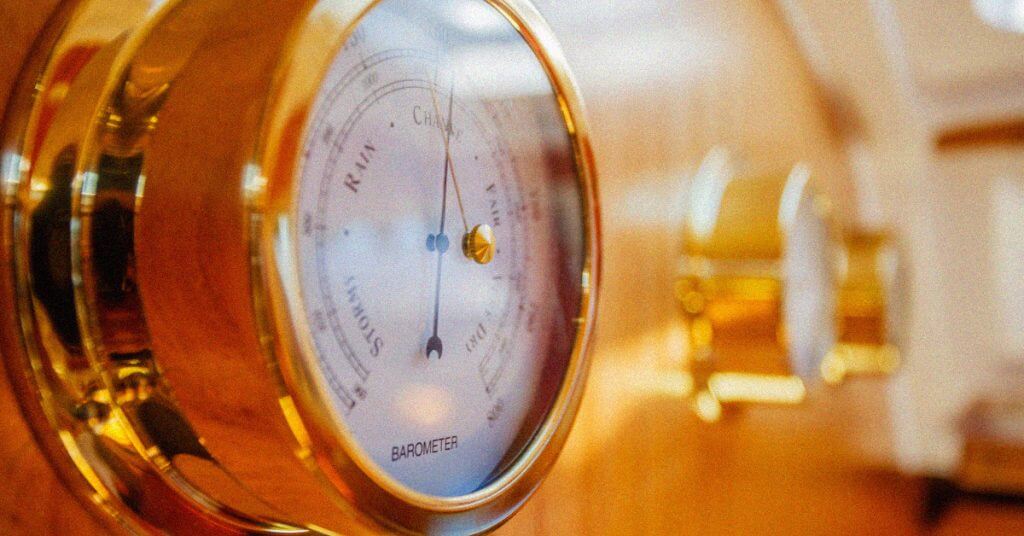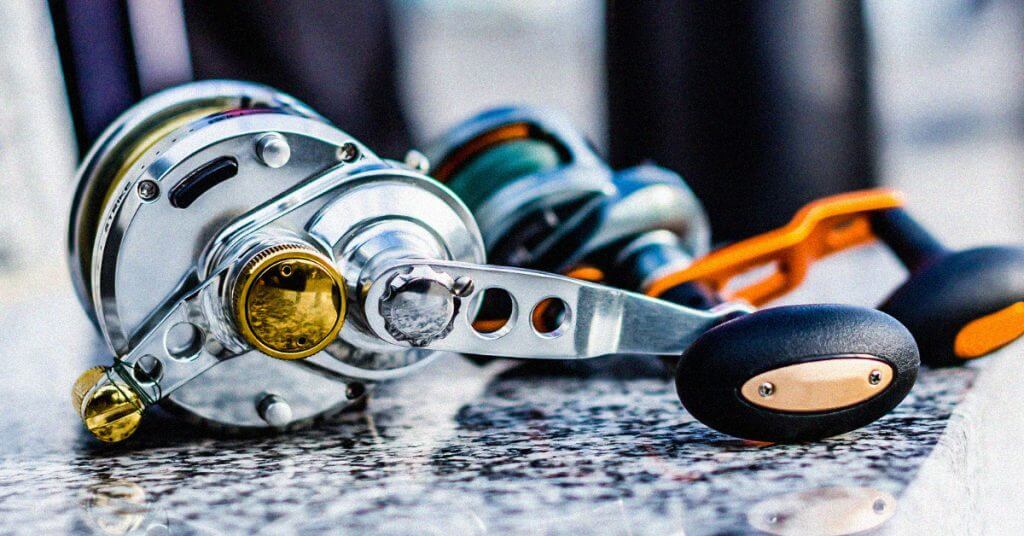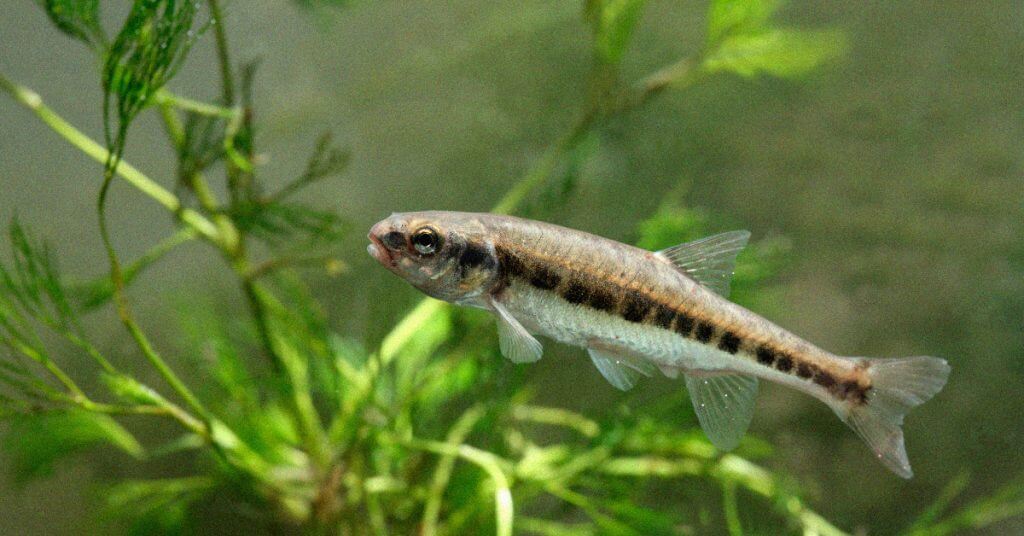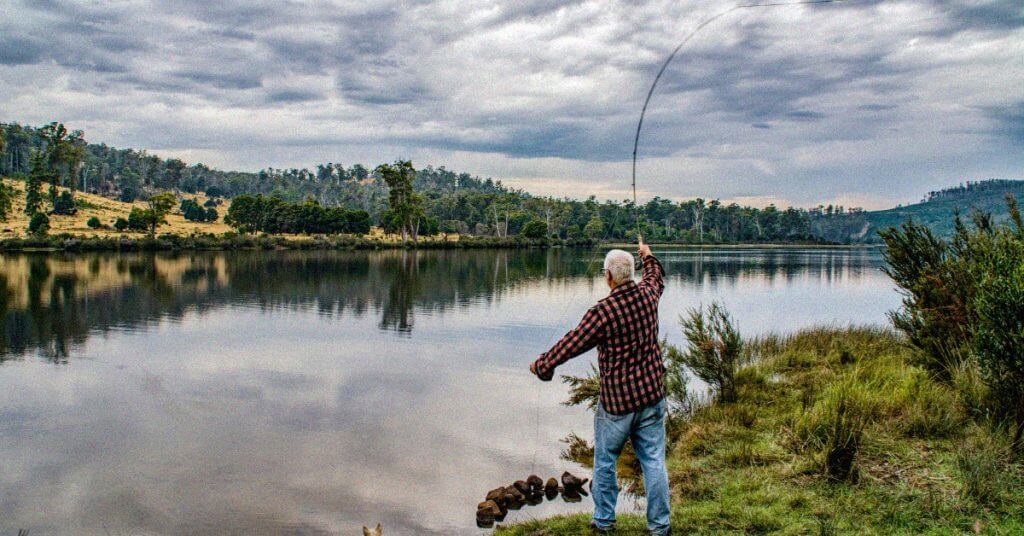Fishing is fishing, right? Throw your bait into the water and a fish is going to swim by and bite it. Well, not exactly. Targeting a specific species of fish is the best approach to have the most success.
Bass fishing vs trout fishing is no different. I’ve spent years fishing both species and the best way to catch one is by specifically targeting it with your lures and presentation. By the end of this article, you will know the difference between trout vs bass fishing. Let’s get going!
- How to be More Successful Bass Fishing
- The Facts You Must Know About Bass
- Where to Find Largemouth Bass
- What’s on the Menu for Largemouth?
- The Lures that Catch the Most Largemouth Bass
- The Gear that Catches the Most Largemouth Bass
- Where to Find Smallmouth Bass
- What’s on the Menu for Smallmouth?
- The Lures that Catch the Most Smallmouth Bass
- The Gear that Catches the Most Smallmouth Bass
- How to be More Successful Trout Fishing
- The Facts You Must Know About Trout
- Trout Vs Bass Bites
- Comparing Bass to Trout Fights
- Trout Vs Bass Fishing Techniques
- Eating Bass Vs Trout
- Final Thoughts
How to be More Successful Bass Fishing
To be more successful bass anglers we all need to understand bass and their habits on a deeper level. This includes knowing when and where they feed and spawn. How they act while feeding and spawning. How water conditions, weather, and time of year affect their behavior. Along with countless other factors that contribute to bass behavior. Which in turn determines what gear you will be using and when you will be using it.
By reading this article and the others like it on this site you will be one step closer to becoming a more successful bass angler.
The Facts You Must Know About Bass
There are several different species of bass. They are found in freshwater and saltwater. The generic term bass can mean anything from striped bass to peacock bass to sea bass and countless others. This article will focus on black bass, primarily largemouth bass and smallmouth bass.

Where to Find Largemouth Bass
Largemouth can be found all across the US. They are found in the largest sizes as well as numbers in the warmer southern waters of the US but they can also be caught by anglers in the cooler northern waters.
Lakes, rivers, and streams all are home to largemouth. In lakes they can be found in deep water or shallow water often depending on the time of year. They prefer to stay out of swift currents in rivers and streams. You will find Bass in deep slow moving holes or against a piece of cover that redirects the current.
This allows them to use less energy by bringing their food to them without fighting against the current.
A majority of the year in a lake a largemouth will relate to cover. Meaning they will be up against a steep bank, rocks, a brush pile, grass, or any other object they can use to hide from their prey.
What’s on the Menu for Largemouth?
Largemouth bass are not picky eaters. What do bass eat? This, like so many other things, will depend on the time of year but they will generally eat anything they can get their mouth on! Shad, bluegill, and crawdads are the most common foods for a bass. They have also been known to eat worms, lizards, snakes, and even small turtles!
The Lures that Catch the Most Largemouth Bass
Ask 5 Bass anglers what’s the best lure for bass fishing and you will get 5 different answers. Ranging from spinnerbaits, jigs, vibrating jigs, soft plastics, crankbaits, jerkbaits, and top water lures.
Each lure should have its place in your tackle box. One lure will outshine the others at specific times and circumstances. So knowing how and when to fish each is one of the best skills you can learn when it comes to fishing for bass.
When I go on a fishing trip I try to match the hatch. Meaning whatever food source is the most abundant at the time I will try to match my lure accordingly.
The Gear that Catches the Most Largemouth Bass
A majority of the time largemouth require heavier tackle than trout. The fishing rod and reel and line is stronger because largemouth bass will generally grow larger than trout. They are more often found in and around heavy cover, which means you must have equipment strong enough to keep them from taking shelter deep in that cover.
Lighter, finesse tackle is often used to catch finicky largemouth.
Where to Find Smallmouth Bass
Smallmouth can be found in similar areas as largemouth across the US. They are predominantly in cooler northern bodies of water but they can also be found in southern waterways.
Smallies call lakes, rivers, and streams home. Unlike largemouth, smallmouth bass tend to prefer moving water and cooler water. They will wait in ambush in a current break, such as a rock or tree for their prey to swim by in the current.
Smallmouth will relate to cover in a Lake similar to a largemouth. Rock piles, brush piles, and grass are some of the smallies favorite hiding spots in deep and shallow waters.
What’s on the Menu for Smallmouth?
Due to their smaller mouth, smallies are more limited on what they can eat. However, just like a largemouth, if they can get it in their mouth they will eat it. Small shiners, crawfish, sunfish, perch, worms, and minnows are never off the menu for a smallmouth.
The Lures that Catch the Most Smallmouth Bass
Downsizing your lures when targeting smallmouth is a wise decision. One of my favorite ways to catch smallmouth is using a Mepps in-line spinner or Rooster tail in-line spinner. Smallmouth bass will demolish crankbaits, jerkbaits, soft plastics, spinnerbaits, jigs, and many other lures.
The same is true with smallmouth as it is with largemouth lure selection depends on the water conditions and the available primary food source.
Smallmouth are less aggressive than largemouth and often require a finesse presentation to get a bite. This is when having an arsenal of soft plastics and knowing how to rig them comes in handy!
The Gear that Catches the Most Smallmouth Bass
You can use the same fishing tackle for smallmouth fishing as you do for largemouth fishing. Though smallies are typically smaller in size than largemouth they fight much harder pound for pound. Requiring stronger rods, reels, and lines than trout fishing.
How to be More Successful Trout Fishing
Understanding trout tendencies will help you become a better trout angler. Trout will behave differently from species to species as well as stocked vs wild fish. Similar to bass, water conditions, weather patterns, and the time of year affect the behavior of trout.
Knowing exactly how these factors affect trout will exponentially increase your odds of getting a bite!
The Facts You Must Know About Trout
The word trout encompasses several distinct species of fish. We will focus on the most commonly fished for species in North America. Rainbow, Steelhead, Cutthroat, Brown, Brook, Lake Trout, and Speckled Trout are all highly targeted throughout the US.
Many state and tribal agencies stock rainbow trout and brown trout in local rivers and lakes to give more angling opportunities to the citizens of that area. This can be a highly controversial topic amongst conservationists and fishermen.
Rainbow trout and steelhead trout are very similar. The primary difference between the two is steelhead spend the majority of their existence in saltwater. They are both silver and rainbow colored along their side.
Cutthroat trout, brown trout, and brook trout are all brown but have distinctive markings to identify each by.
Cutthroat trout get their name from the orangish-red color on their gill plate that has the appearance of their throat being cut. They have black spots along their back that become more defined closer to the tail.
Brown trout are covered with black spots from head to tail and have a yellowish-brown belly.
Brook trout can be identified by their reddish-orange belly and yellow spots.
Lake trout have yellowish spots along the entirety of their dark brown body. They are the largest of the trout species we will focus on in this article.
Speckled trout are silver with a white belly. They have black spots beginning after the gill plate to the tip of the tail. They are the other saltwater trout we will discuss.

Where to Find Trout
Trout can be found in streams, rivers, lakes, and the ocean. Clear water streams and rivers are where most species thrive. Most species of trout only survive in cold waters, if the water temperature gets too warm they will die off or find cooler water.
Trout will congregate in the deeper holes in cold water streams and rivers to use less energy while they wait for their prey. Like bass, trout will stay close to current breaks such as rocks and trees to ambush unsuspecting food.
Lake trout are found deep in open water. They are the exception to the rule for trout species in the US.
For the most part, trout are a freshwater fish. However, speckled trout and steelhead trout are found in saltwater.
Speckled trout are found shallow in bays and brackish water along the coasts of Texas to Florida.
What’s on the Menu for Trout?
Trout will eat insect larva, small baitfish, crawfish, and just about anything else they can grab with their mouth. They are much less aggressive than a bass but when an opportunity presents itself they will snatch up their food.
The Lures that Catch the Most Trout
The most well known way to catch trout is to use flies. Fly fishing requires stealth, patience, and practice. Many anglers spend their entire lives trying to master the art of fly fishing. In-line spinners, spoons, salmon eggs, and dough bait are all great candidates for trout lures and baits.
Jigs are often used to catch lake trout. While speckled trout fishermen dream of a speck destroying a top water lure.

The Gear that Catches the Most Trout
The gear used to catch trout is as diverse as the number of species. From fly fishing rods and reels to ultralight rods and reels to the strong rods and reels needed for trolling and jigging.
The species you are targeting and your preferred technique will determine the gear you need. Fly fishermen spend hours wading in cold water so they not only invest in quality fly rods and reels but also quality waders to stay warm and dry.
Ultralight fishermen can wade or stand on the bank and fish with their gear. I prefer this method from a kayak.
Trolling and jigging for lake trout requires a boat big enough to handle the conditions of the Great Lakes, tough rods and reels, and strong line.
Trout Vs Bass Bites
Bass and trout attack a lure very differently. Trout are more subtle and stealthy. They will peck at the bait or lure like this video shows. While fly fishing they will barely disturb the water to inhale the fly.
Bass on the other hand aggressively attack a lure. There are a few techniques and circumstances that a bass will lightly grab the lure. However, for the most part bass are hard hitting fish.
Comparing Bass to Trout Fights
Bass fight harder than trout. They are typically the larger fish and require the heavier tackle. With that being said pound for pound trout put up a great fight!
They fight differently so comparing the two really isn’t fair. Trout go on short runs shaking their heads back and forth. Bass will go on longer runs but also shake their heads back and forth at times. Both will jump and head shake, one of the most exciting and nerve racking moments of a fisherman’s life!
Both fights are a thrill in their own unique ways and should be experienced by all anglers!
Trout Vs Bass Fishing Techniques
Surprising to most people, the techniques used to catch bass can also be used to catch trout. Bass require heavier gear and larger lures. Where trout often require lighter gear and smaller lures.
Fly fishing for bass is becoming more popular while it has been the pinnacle of trout fishing for many years.
Trout and bass can both be caught while trolling, using top water lures, and jigging. While there are subtle differences in the techniques for bass vs trout the skills are easily transferable.

Eating Bass Vs Trout
Which fish tastes better? This comes down to personal preference. Trout taste great and so do bass. Honestly, I don’t like eating trout simply because of all the tiny bones. I can easily fillet a bass and cut out the rib cage without leaving behind a single bone.
This just isn’t possible, for me, when cleaning and cooking trout. I end up leaving behind a small bone or two.
There are all kinds of recipes online for trout and bass to test out! I recommend trying both fish and deciding which one you like better!
Final Thoughts
Is bass fishing or trout fishing better? Personally, it’s hard to beat floating down a river throwing a Super Duper Spoon on an ultralight rod and reel for trout. While I have caught crappie, bluegill, white bass, largemouth bass, smallmouth bass, and catfish with my ultralight set up, a trout still prevails as my favorite fish to catch.
Trout vs bass fishing, in my opinion, trout wins. However, that doesn’t mean I would ever turn down a bite from any other species of fish! It’s time for you to get out there and have an awesome fishing adventure!




